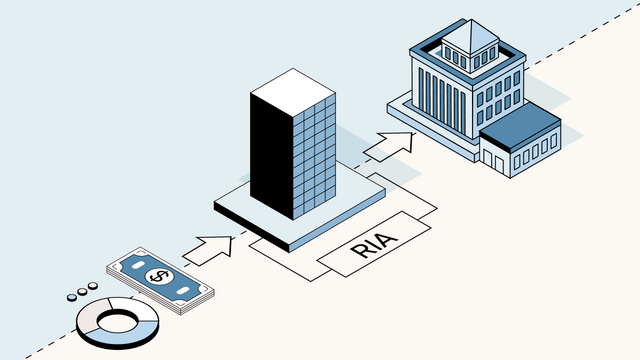Venture capital news outlets often report on high-profile fund closings by name-brand firms raising multibillion-dollar funds. At the other end of the market, emerging VCs try to generate interest in their funds by publicizing successful closing events on social media. But what does it actually mean for a fund to close? And how is it different from holding a first close?
What is a fund closing?
A fund closing occurs when an investor signs the fund’s subscription documents and the fund’s general partner (GP) countersigns them. At this point, the investor formalizes their pledged capital commitment and becomes a limited partner (LP) in the fund. Typically, GPs close several investors at once on a specified closing date.
A VC fund can hold one or more closings before it stops accepting pledged capital. After a fund’s final close, the GPs do not accept new LPs—also called “subscribers”—to the fund. (While it’s possible for funds to reopen, this is rare.) At this point, GPs shift the bulk of their attention from fundraising to identifying prospective investments, deploying capital, supporting portfolio entrepreneurs, reporting fund metrics, and developing relationships with the fund’s LPs.
Why funds hold closing events
If you’re a GP, fund closings give you access to investable capital. Once a LP has closed into the fund, your limited partnership agreement (LPA) entitles you to request contributions up to the pledged amount by making capital calls.
It’s possible to request 100% of an LP’s contribution when they close into your fund. However, you’ll only want to do this if you have deals lined up and are ready to invest most of that amount. Having a large amount of capital on hand can damage fund performance metrics, such as the fund’s internal rate of return (IRR). For this reason, most GPs strategize how much capital they call at closing, and make subsequent capital calls as needed.
Minimum fund size
Most VC funds are closed-end funds, which means they operate on a fixed time frame—usually 10 years—and with a fixed amount of capital. The vast majority of the fund’s investment comes after the final close. That’s because your ability to execute your fund’s investment strategy largely depends on the total amount of capital you have to invest.
Your investment strategy includes things like the industries and stages of the companies you’ll be investing in, how many investments you’ll make, and how much capital you reserve for follow-on investment. Your minimum fund size is the lowest amount of capital you’ll need to execute this strategy.
Stages in the closings process
First close
After meeting with prospective investors to pitch them on the fund’s investment strategy, you’ll schedule a first close to formally launch the fund and kick off the fundraising period. This is an initial deadline for your LPs to subscribe to the fund. Funds typically encourage LPs to subscribe as of the first close by including terms in the LPA that make an early subscription more attractive (effectively charging a fee to LPs who subscribe after that time).
Some funds are able to raise their target fund size at their first close, though this is quite rare. Typically, GPs will try to close on at least a quarter of the minimum fund size at the first close. This sends a message to prospective LPs that the fund is on track to reach its target. It also serves as a reminder that they’ll soon need to make up their minds about subscribing to the fund and watch for the final closing date announcement.
Subsequent closings
A fund’s LPA will specify the period of time the fundraising period can last before the fund must hold its final close. Typically, it’s 12 months from the date of the first close, with the ability to extend for six or 12 months with the consent of a certain number of your LPs.
Depending on your target fund size and progress with fundraising, you may decide to hold one or more closing events after the first close, but before the final close. If you’re an emerging manager, demonstrating momentum to your target fund size is critical to winning over hesitant LPs; partial closings will show that you’re making progress. Strong momentum shows that your fund is gaining traction among peer investors and offers an initial measure of a fund’s ability to hit the target fund size and the overall viability of the investment thesis.
You’ll want to balance the potential benefits against the labor involved: As each new set of investors closes into the fund, you’ll have to recalculate the percentage ownership in your fund and in any investments you’ve already made as if each investor had invested as of the first closing. You might also have to redistribute capital to the existing LPs.
Final close
The ideal outcome of fundraising is to hit your target fund size before the end of your fundraising period. Doing so assures LPs that you have the capital to successfully execute the investment strategy they’re buying into.
Closing at a significantly smaller fund size than you had planned will force you to rethink your investment strategy. With too little capital, you likely won’t be able to invest in as many companies as you indicated in your original pitch—or you’ll only be able to do so at smaller amounts. Since LPs base their decisions about whether to invest on your fund’s investment strategy, revising it could lead to investors pulling out (although this is rare).
When a fund closes at a higher size than you originally targeted, it’s said to be “oversubscribed.” If the fund has more LP subscription demand than the GPs can feasibly accept and invest, they may have to turn away some LPs. Closing high might also require you to rethink your investment strategy. While this is definitely a better problem to have than too little funding, it could lead to investors to question your ability to execute your strategy on a larger scale. Some LPs could decide to pull out as a result.
Timeline to the final close
The length of time it takes to raise a venture capital fund varies greatly. Investors with experience at well-known venture firms often have investor networks and track records that help them collect fund subscriptions very quickly. Emerging GPs with large networks of high-net-worth individuals who count as accredited investors—such as wealthy friends, family, and classmates—may be able to collect subscriptions faster than peers without those connections. First-time GPs without a strong track record or investor network can take up to two years to close a fund.
If GPs may choose to extend their fundraising period beyond the initial 12 months (according to the terms outlined in their LPA), then they may be obligated to make certain additional regulatory filings. For instance, if your fund is raising under one of the offering exemptions provided by Regulation D, you’ll need to file an amendment to your Form D annually from the date of the initial filing if you are still fundraising after 12 months.
Tips for navigating closings
Successful closings are all about communicating with your LPs. A few things to keep in mind:
Understand your LPs’ needs
If you’ve decided to raise a fund, you probably already have a list of potential LPs in mind. Before you try to decide when to hold a first close, learn as much as you can about their investment interests and strategies.
Understanding what your LPs are looking for and how much they’re ready to invest is a critical part of getting to your first close. Whether they’re individuals, family offices, or institutions, LPs have preferences about when, how much, and in what sectors they invest. Many investors, especially large institutional LPs, also prefer to invest at specific stages or in industries related to their organizational activities, mission statements, or existing investments and assets.
Even if an LP is sold on your fund’s investment thesis, they may only be interested in writing checks that are too large for your target fund size; generally, LPs won’t want to hold more than a 10–15% stake in a given fund.
Collect soft commitments
The fundraising period begins when your first LP closes into your fund. Since this period is limited, it’s helpful to get soft commitments from LPs. While verbal commitments and letters of intent to invest aren’t binding, they allow you to gauge your progress before you start the clock by holding a first close. Hitting 20% of your target fund size by your first close is a success metric some LPs will look for, so you should only hold one if you think your tally of soft commitments can get you there.
Send LPs your fund documents
Subscription documents include the fund’s subscription agreement and investor questionnaire.
LPs will also want access to additional documents containing other information relevant to their investment in the fund, and terms for doing so. These include:
-
The pitch deck for the fund
-
The fund’s limited partnership agreement (LPA)
-
Your investment management agreement
-
Your private placement memorandum (PPM), if you have one
Expect that some of your LPs will want several weeks to review these documents with their lawyers or other advisers, and plan to have them ready and available for LP review at least one month before your first close. If you expect LPs to negotiate terms of investment, which is fairly common, plan to make all of these documents available up to three months ahead of the first close.
Show your progress
VC fundraising is similar to a SaaS business model: Think of LPs subscribing to the fund as they would subscribe to enterprise software. To drive subscriptions, you need to demonstrate value along the way.
Give LPs regular updates on your fundraising progress. The nearer your fund gets to its target fund size, the more pressure you’ll be able to apply to investors who haven’t committed: Announcing your date for a final close tells your remaining prospects that it’s their last chance to invest.
How you publicize your progress will depend on which SEC registration exemption your fund is claiming. While raising under the 506(b) exemption permits you to publicize your closings to your personal and professional networks, you’ll want to avoid anything that could count as “general solicitation,” including paid advertising and public social media posts. Funds raising under the 506(c) exemption aren’t restricted from general solicitation, including advertising.
Closings on Carta
Communication is key to a smooth fund closing. Carta Closings makes it easy by giving LPs a single platform where they can:
-
Access your fund’s data room to review the fund offering documents
-
Complete their investor questionnaire
-
Sign and submit their subscription documents
With everything in one place, LPs can complete their subscriptions in just a few simple steps.
Closings tracker
Carta Closings also helps you monitor your fundraising progress by letting you see where your LPs are on the path to subscription. In the Closings tab of Carta’s GP portal, you’ll see a status designation next to each LP you’ve identified for your fund:
-
Prospect: LPs are listed as prospects until you invite them to fill out subscription documents
-
Invited: These LPs have been sent your subscription documents, but haven’t started to fill them out
-
In progress: These LPs have started but not completed their documents
-
Investor signature pending: These LPs have completed their documents, but not all the necessary signatories have provided their signatures
-
Submitted: These LPs have submitted their documents for your review and countersignature
-
Countersigned: These LPs have successfully subscribed to your fund
You can also manage LP access to your fundraising data room and see who has been interacting with the information. These insights will help you interact thoughtfully with your investors, estimate your progress toward your target fund size, and strategize the date of your next closing.
To learn more about Carta Closings, reach out to request a demo.



